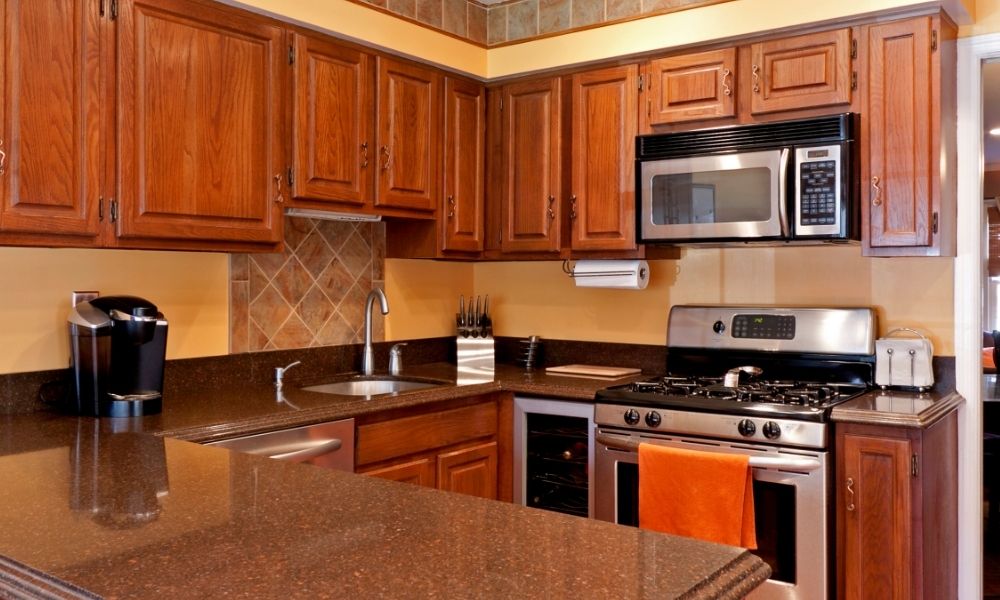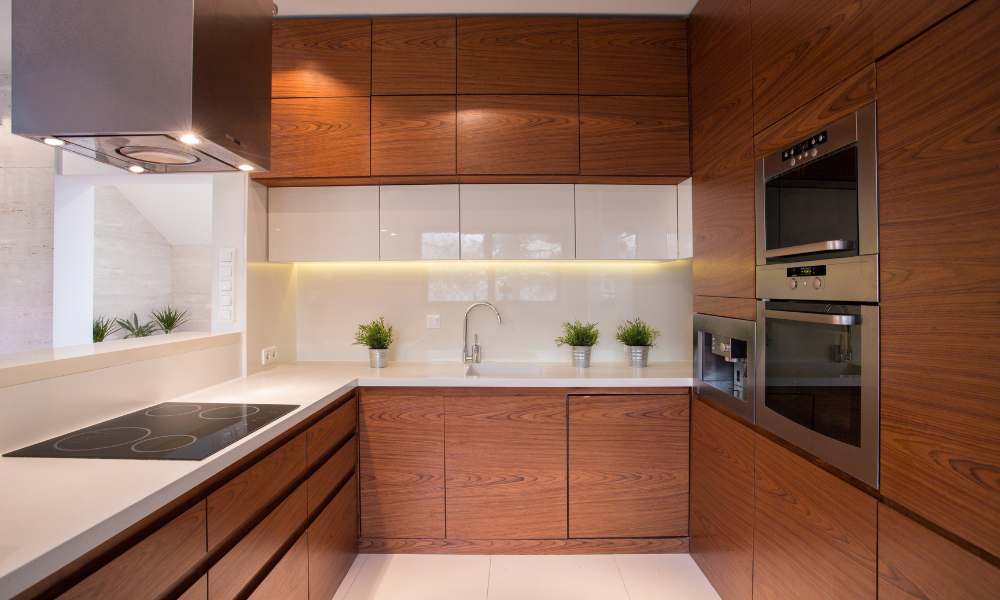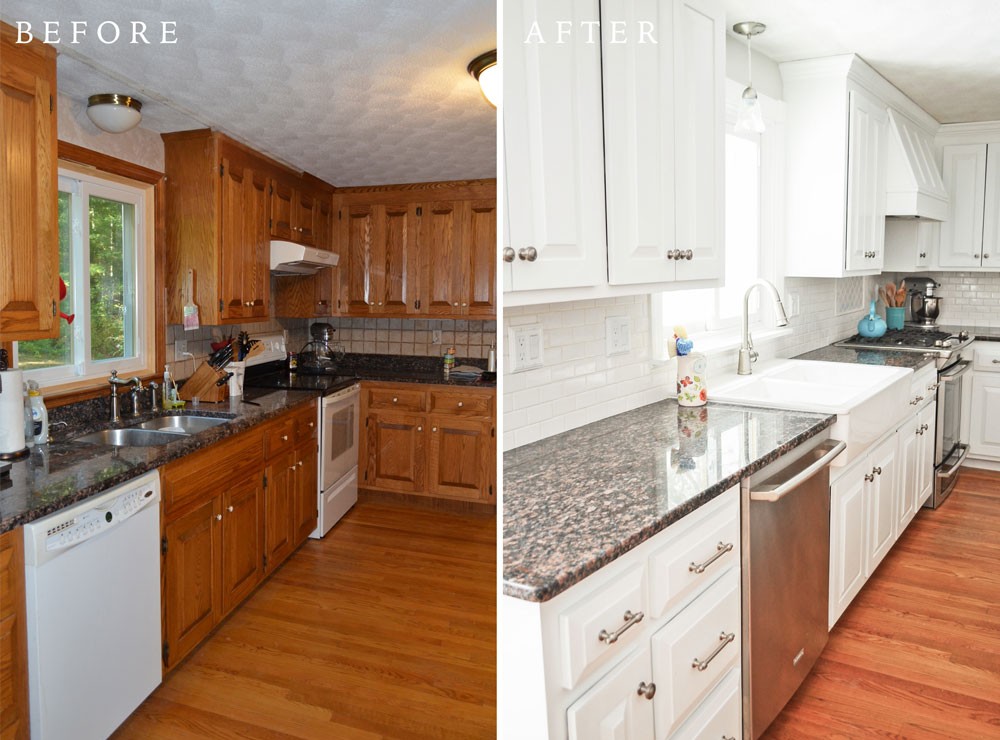Understanding the Process

Re-staining your kitchen cabinets without stripping them can be a great way to refresh their look and give them a new lease on life. It’s a more convenient and time-saving option compared to stripping, which can be messy and time-consuming.
But, like any DIY project, it’s important to understand the advantages, limitations, and steps involved before you dive in.
Advantages of Resting Without Stripping
Resting your cabinets without stripping offers several advantages, making it a popular choice for many homeowners.
- Saves Time and Effort: Stripping involves removing the existing finish, which can be a lengthy and labor-intensive process. Resting without stripping is much faster and less demanding.
- Less Mess: Stripping often involves harsh chemicals and creates a lot of mess. Resting without stripping is a cleaner and less messy option.
- Preserves the Existing Finish: If the existing finish is in good condition, restaining without stripping helps preserve it, adding to the longevity of your cabinets.
Limitations of Resting Without Stripping
While restaining without stripping offers advantages, it also has some limitations you should consider.
- Limited Color Change: Resting without stripping may not allow for a dramatic color change, especially if the existing stain is dark. The new stain will blend with the existing color, resulting in a subtle shift.
- May Not Cover Imperfections: If your cabinets have scratches, dents, or other imperfections, restaining without stripping may not completely hide them. The new stain will adhere to the existing surface, so any imperfections will likely show through.
- Requires a Smooth Surface: Resting without stripping works best on smooth surfaces. If your cabinets have a textured finish, the new stain may not adhere evenly, leading to an uneven appearance.
Preparing Cabinets for Resting
Proper preparation is crucial for a successful restaining project. Follow these steps to ensure your cabinets are ready for the new stain.
- Clean the Cabinets Thoroughly: Use a mild detergent and warm water to clean the cabinets, removing any dirt, grease, or grime. Let them dry completely before proceeding.
- Sand the Surface: Sand the cabinets with fine-grit sandpaper to create a smooth surface for the new stain to adhere to. Focus on areas with imperfections or unevenness.
- Tack Cloth: After sanding, use a tack cloth to remove any dust or debris from the surface. This will ensure the stain adheres evenly and prevents any imperfections from appearing.
Choosing the Right Stain Color and Finish
Selecting the right stain color and finish is essential for achieving the desired look for your cabinets.
- Consider the Existing Color: If you’re going for a subtle change, choose a stain color that complements the existing color. For a more dramatic change, choose a color that contrasts with the existing one.
- Test the Stain: Before applying the stain to your entire cabinet, test it on a small, inconspicuous area. This will give you an idea of how the color will look on your cabinets and ensure you’re happy with the result.
- Choose the Right Finish: The finish you choose will determine the look and durability of your cabinets. Consider factors like shine, protection, and ease of maintenance when selecting a finish.
Methods for Restaning: How To Restain Kitchen Cabinets Without Stripping

Restaning kitchen cabinets without stripping involves applying a new stain over the existing finish. This technique is ideal for updating the color of your cabinets without the hassle of removing the old finish. There are a few different methods you can use to achieve this, each with its own set of advantages and disadvantages.
Using a Stain-Blocking Primer
A stain-blocking primer is a great option for covering up any dark or uneven areas on your cabinets. This type of primer is designed to prevent the new stain from bleeding through the old finish. This method is perfect for those who want to change the color of their cabinets significantly, as it provides a clean slate for the new stain to adhere to.
Applying a Topcoat Over Existing Stain
Applying a topcoat over the existing stain is a simpler method than using a primer. It involves using a clear coat or a tinted topcoat to refresh the color and protect the existing stain. This method is suitable for minor color changes or for simply adding a layer of protection to your cabinets.
Comparing Different Restaning Methods, How to restain kitchen cabinets without stripping
| Method | Advantages | Disadvantages |
|—|—|—|
| Stain-Blocking Primer | Provides a clean slate for the new stain | Can be more time-consuming and expensive |
| Topcoat | Simple and quick to apply | May not be suitable for significant color changes |
| Glaze | Creates a distressed look | Can be messy and require practice |
Applying a Glaze for a Distressed Look
Glazing is a technique that involves applying a thin layer of glaze over the existing stain. This creates a distressed look by highlighting the grain of the wood and adding depth to the color.
To apply a glaze:
- Start by mixing a small amount of glaze with a glaze medium or paint thinner. This will thin the glaze and make it easier to apply.
- Apply the glaze to the cabinets using a brush or rag. Work in small sections and use a wiping motion to create a distressed effect.
- Remove any excess glaze with a clean cloth.
- Allow the glaze to dry completely before applying a topcoat.
Important Considerations

Before you dive into restaining your kitchen cabinets without stripping, there are a few crucial things to keep in mind. These considerations will ensure a smooth and successful process, resulting in a fresh and fabulous look for your kitchen.
Tools and Materials
Gathering the right tools and materials is essential for a successful restaining project. Having everything on hand will make the process much smoother.
- Sandpaper: You’ll need sandpaper in various grits, starting with a coarse grit (80-120) for removing any rough spots and ending with a fine grit (220-400) for a smooth finish.
- Tack cloth: This is used to remove dust and debris after sanding, ensuring a clean surface for the stain.
- Paintbrushes: Choose brushes specifically designed for stain application. These brushes are typically made of natural bristles and are designed to distribute the stain evenly.
- Drop cloths: Protect your floors and surrounding areas from spills and drips.
- Gloves: Protect your hands from the stain and any chemicals used in the process.
- Safety glasses: Protect your eyes from dust and debris during sanding.
- Restaining product: Choose a stain that complements your kitchen’s style and matches your desired color.
- Polyurethane finish: This protective layer will seal the stain and provide a durable, water-resistant finish.
- Cleaning supplies: You’ll need cleaning supplies like mineral spirits or denatured alcohol to clean brushes and tools.
Safety Precautions
Working with stains and finishes requires taking necessary safety precautions to protect yourself and your surroundings.
- Ventilation: Ensure proper ventilation in your workspace by opening windows or using fans to dissipate fumes.
- Gloves and masks: Wear gloves to protect your hands from the stain and a mask to prevent inhaling fumes.
- Eye protection: Always wear safety glasses to protect your eyes from dust and debris during sanding.
- Fire safety: Keep a fire extinguisher handy in case of a fire. Stain and finishes are flammable, so it’s crucial to exercise caution.
- Read product instructions: Always read and follow the manufacturer’s instructions on the stain and finish products for safe usage.
Evaluating Cabinet Condition
Before you start restaining, it’s essential to evaluate the condition of your cabinets. This will help you determine the necessary steps to achieve the desired finish.
- Check for damage: Look for any scratches, dents, or chips in the existing finish. Minor imperfections can be sanded down, but significant damage may require more extensive repairs.
- Assess the existing finish: Determine if the current finish is oil-based or water-based. This will help you choose the right stain and finish for your project.
- Inspect for loose hardware: Ensure all hardware, such as hinges and knobs, is securely attached before sanding or staining.
- Consider the color: Determine if the existing color is compatible with your desired color. If the current color is too dark, you might need to use a stripping product before restaining.
Professional Finish Tips
Achieving a professional-looking finish for your kitchen cabinets requires careful preparation and attention to detail. Here are some tips to help you achieve that polished look.
- Sanding technique: Sand in the direction of the wood grain using even strokes. This helps to create a smooth surface and avoid visible sanding marks.
- Cleanliness: Ensure the surface is completely clean and free of dust and debris before applying the stain.
- Stain application: Apply the stain evenly using a brush, wiping away any excess. Work in small sections to ensure even coverage.
- Multiple coats: Apply multiple thin coats of stain for a deeper, richer color. Allow each coat to dry completely before applying the next.
- Finishing touches: After the stain has dried, apply a protective polyurethane finish. This will seal the stain and provide a durable, water-resistant surface.
How to restain kitchen cabinets without stripping – Restoring your kitchen cabinets without stripping can be a great way to refresh their look without a complete overhaul. If you’re looking for inspiration for your kitchen makeover, you might want to consider the latest trends in kitchen cabinets and islands , which often feature bold colors and unique finishes.
Whether you’re going for a modern, farmhouse, or traditional style, restaining your cabinets without stripping can help you achieve the desired look while preserving the integrity of the original wood.
Re-staining your kitchen cabinets without stripping can be a great way to refresh their look without a complete overhaul. If you have open-face cabinets, like those featured in this article about open face kitchen cabinets , the process might be even easier since the insides of the cabinets are exposed.
This technique allows you to easily reach all surfaces and achieve a uniform stain, resulting in a beautiful and updated kitchen.
